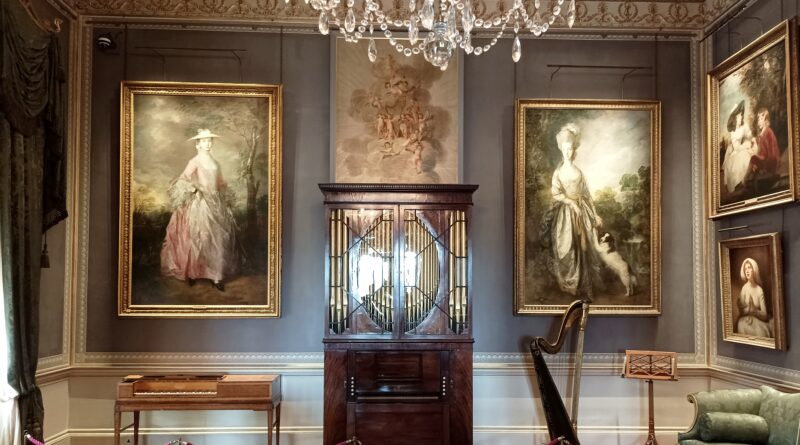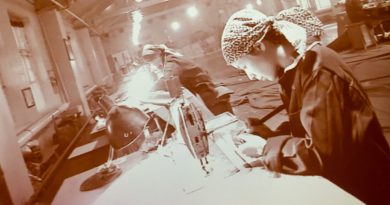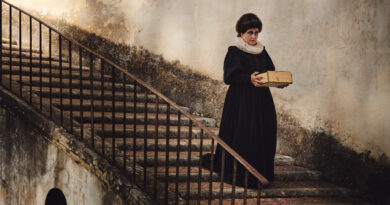Kenwood House: The Hidden Neoclassical Paradise
Owing to its astonishing interiors, stunning world-class art collection, and surrounding peaceful gardens, Kenwood House is one of London’s hidden gems. Open free of charge to the public, the site is preserved as a fine example of the artistic home of a gentleman of the Eighteenth Century.
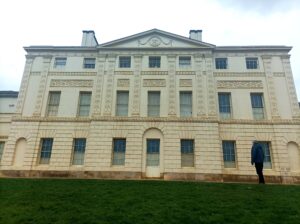
On the edge of Hampstead Heath and surrounded by paeaceful gardens, Kenwood House is one of London’s hidden gems. The astonishing interiors and stunning world-class art collection, which includes Rembrandt’s Self-Portrait with Two Circles, are free for everyone to enjoy. With children’s activities, a café to relax in and grounds to stretch your body, there are treats suitable for any kind of visitor.
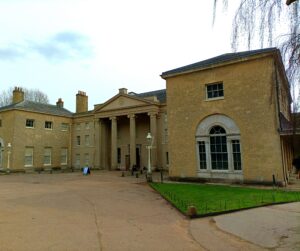
Now looked after by English Heritage, Kenwood House’s interiors have been extensively restored, most impressively its Library, in which Robert Adam’s original colour scheme has been reinstated. Kenwood House shimmers with opulence, offering a window on its fascinating past. Its majestic exterior played a starring role in the film Notting Hill as the setting for the Henry James period drama in which Julia Roberts’ character was starring. Kenwood is now home to the 1st Earl of Iveagh’s renowned collection of Old Master and British paintings, which includes works by Rembrandt and Vermeer.
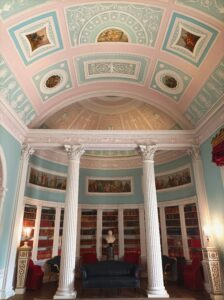
The house was probably first built in the early 17th Century and, between 1764 and 1779, transformed by Robert Adam (1728-1792) into a neoclassical villa for William Murray, 1st Earl of Mansfield. Scottish architect Robert Adam’s family were the dominant architects in London in the late 18th century, and he was renowned for his designs for country houses. The most important aspects of his work at Kenwood are the south elevation and the interior of the library. The 6th Earl of Mansfield, Alan David Murray (1864–1935), inherited Kenwood from his brother in 1906, but decided to sell it in 1914. From 1909 it had been rented out to tenants, including Grand Duke Michael Michaelovitch (1861–1929), second cousin to the last Tsar of Russia, Nicholas II, and his family, who lived there until 1917. They were followed by the American millionairess Nancy Leeds, who moved out when she married Prince Christopher of Greece in 1920. In November 1922 Lord Mansfield sold off the contents of the house, including some of the original furnishings, in a four-day sale. By 1925, however, Kenwood’s future was secured when Edward Cecil Guinness, 1st Earl of Iveagh (1847–1927), bought the house and 74 acres immediately surrounding it. The Kenwood Preservation Council purchased land including the ponds and ‘Ken Wood’, and vested it in London County Council. The Iveagh Bequest Act of 1929 stipulated that Kenwood should be open free of charge to the public with the «mansion and its contents […] preserved as a fine example of the artistic home of a gentleman of the eighteenth century», including the display of 63 of Lord Iveagh’s outstanding collection of Old Master and British paintings. During the Second World War Kenwood housed servicemen. In 1949, realising the need for significant repair work, the Iveagh Bequest Trustees handed it over to London County Council. It was taken over by English Heritage in 1986.
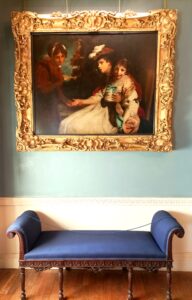
Following an extensive repair and conservation project begun in 2012, part-funded by the Heritage Lottery Fund, Kenwood reopened in late 2013. Work included repairing the Westmorland slate roof and redecorating the exterior and interior of the house, based on new paint research on the original Adam scheme, and a redisplay of the Iveagh Bequest paintings in the south front rooms. These helped to herald Adam’s ‘revolution’ in design which later became the ‘Adam style’, a movement of international relevance, using a vocabulary of decorative motifs partly inspired by the domestic architecture of ancient Rome, as opposed to the public buildings that influenced the Palladian style.
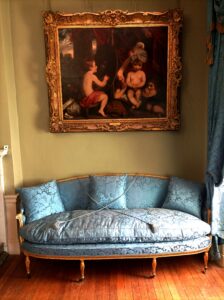
The library of Kenwood House in particular, with its neoclassical form, decorative frieze and ceiling paintings by Antonio Zucchi, is one of Adam’s greatest interiors, and has assumed a new importance as such following the recent extensive paint analysis and the restoration of Adam’s original decorative scheme. The three other main surviving Adam interiors at Kenwood – the entrance hall, Great Stairs and antechamber – are also of national significance as examples of his work. Although altered, they retain considerable fabric and character from Adam’s time and constitute the main sequence of interiors planned by the architect, leading from the north entrance to his grand library. Adam’s design for the ceiling in the entrance hall and the planning of the screen in the antechamber are good examples of the ingenuity that he brought to his interiors. The fact that he devoted the whole of the second part of his publication The Works in Architecture of Robert and James Adam to Kenwood indicates its value to him in the history of his work.
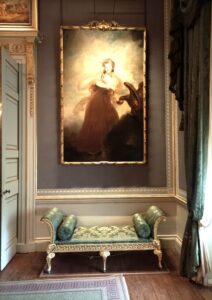
Kenwood House is home to the finest collection of Old Master paintings given to the British nation in the 20th century. Under the terms of the Iveagh Bequest, the paintings displayed at Kenwood guarantee its role as a free public art gallery. The 63 paintings can be divided into distinct groups. The first and largest group comprises British portraits of the second half of the 18th Century, including Thomas Gainsborough’s Mary, Countess Howe, and works by Sir Joshua Reynolds and George Romney. The second group consists of major paintings of international standing, predominantly drawn from the 17th-Century Dutch and Flemish schools. Some works, including Rembrandt’s self-portrait (c 1665) and Johannes Vermeer’s The Guitar Player (c 1672), are among the finest paintings by their respective artists. There is also a small group of French paintings of the Rococo period. In addition, the Suffolk Collection, historically associated with Charlton Park in Wiltshire, is a nationally significant collection of 17th-century paintings, which has been displayed on the first floor of Kenwood since 2001.
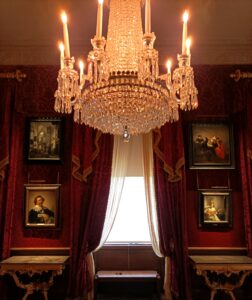
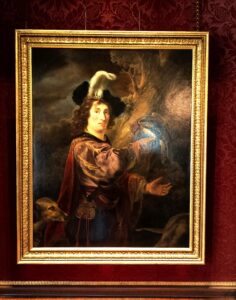
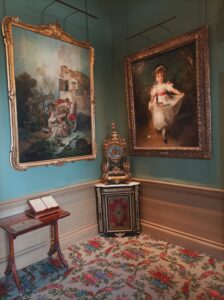
Last but not least, Kenwood House displays a small collection of significant musical instruments. An 18th century squared piano made in 1791 by famed piano makers John Broadwood and Sons. The squared piano first appeared in London in 1766 and swiftly gained a folllowing with composers and amateur musicians. Early fans included Queen Charlotte, wife of George III, and Marie Antoinette. The 19th Century Grecian harp, with a double-action pedal, designed and made in 1828 by German-born instrument maker Sébastian Erard. The harp has many pedals, one for each note, and was made to play music in a variety of keys. It is worth noting that pedal harps of this sort were mostly played by women. In the 18th and 19th Century, music was considered an appropriate pastime for women, who were not recognised the same rights or status in society as men. Being excluded from the public realm and from the labour market, middle and upper-class women were expected to study music and to entertain family and friends by singing or playing instruments. Thanks to its sweet and harmonious sound, harps became particularly popular instruments among women, for we have many portraits and prints showing women playing the harp.
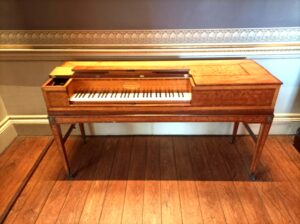
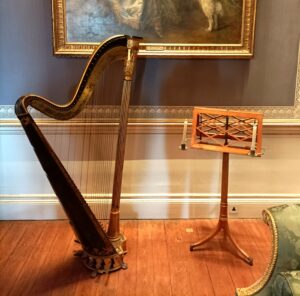
Photos by the author
Video: Fluky Cassette (CC BY)

